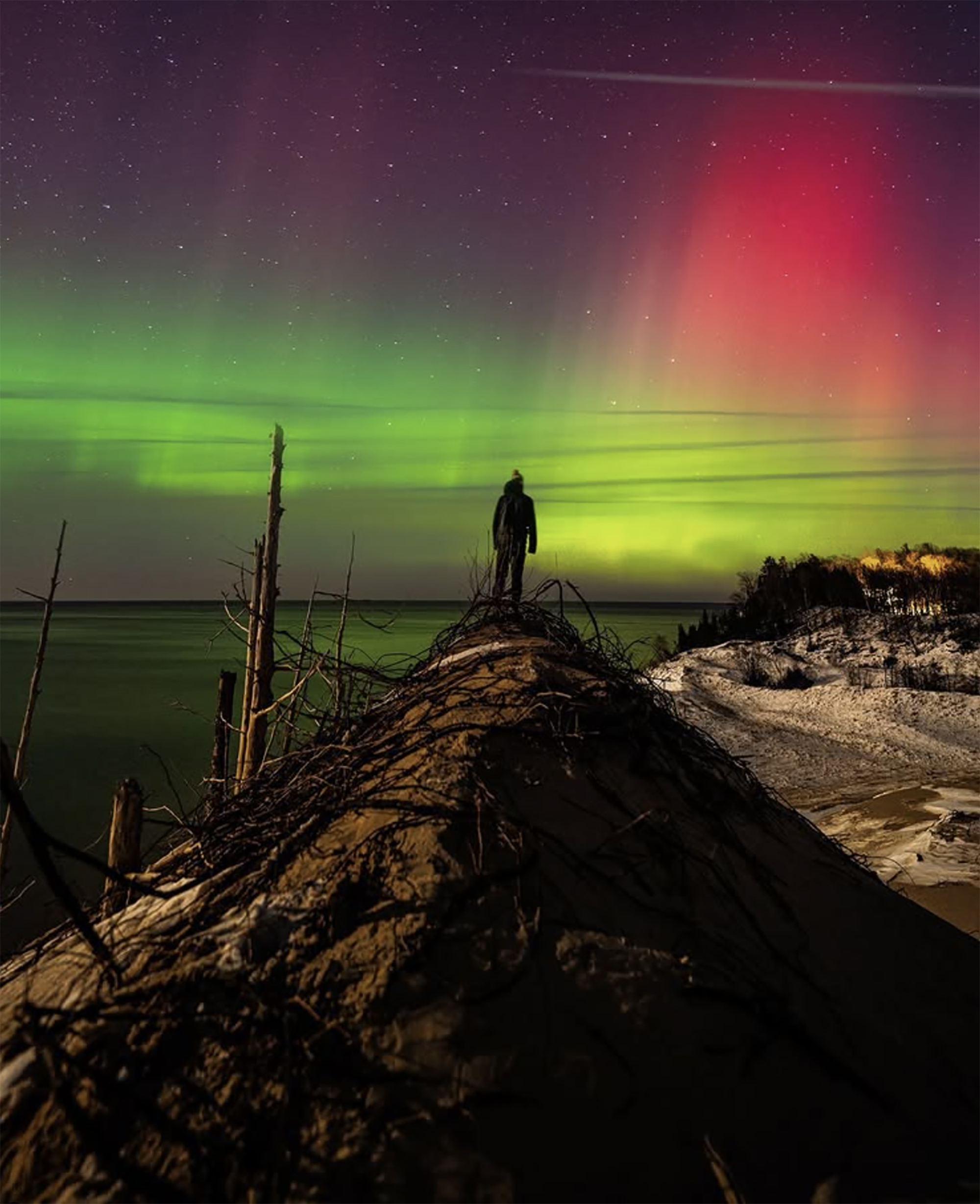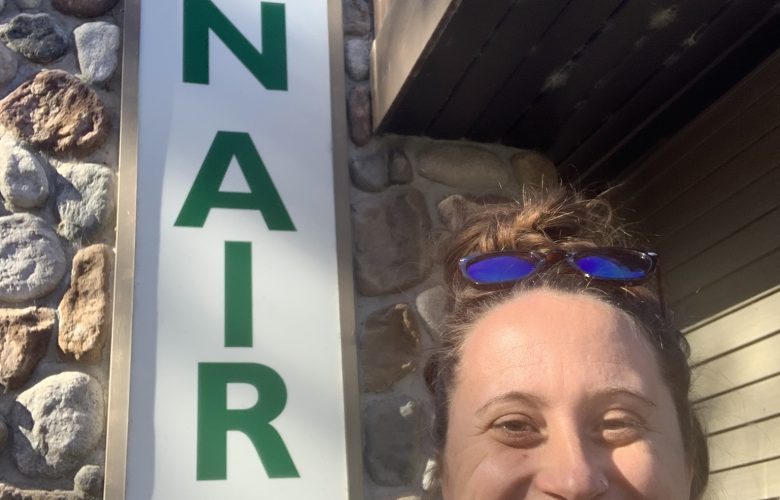An essay advocating for appreciative adaptation
By Tim Mulherin
Current Contributor
A while back, I had the opportunity to interview Leelanau County Sheriff Mike Borkovich about the impact of newcomers and tourists on the area, seeking his keeping-the-peace perspective. Our conversation would contribute to a book I was researching about the phenomenon of change sweeping the Grand Traverse region—mostly accelerated by the pandemic.
Sheriff Borkovich shared several significant observations related to seasonal visitors and vacation property owners that I had witnessed, as well.
Of course, with Borkovich being a law enforcement officer, having people abide by the law is his utmost concern. Reckless driving—particularly speeding—and disturbing the peace, sometimes attributed to short-term vacation rentals in otherwise quiet neighborhoods, seem to surge like clockwork whenever the summer solstice rolls around, and now even into the fall and spring shoulder seasons.
From a cultural standpoint, the sheriff notably mentioned another topic that we both wonder about: why do some relocators and seasonal property owners insist on bringing trappings from whence they came to Northern Michigan? Whatever happened to appreciative adaptation, rather than recreating an incongruous image from elsewhere?
I have been frequenting the region since 1986. Since then, I always wanted to be a Michigander—but that would result in a divorce. (The Betsie Current has previously published my essays about trying to relocate to Northern Michigan; I would gladly forgo my Indiana citizenship, but that one-way migratory attempt was soundly defeated by a confluence of unfortunate circumstances—especially that of being married to a Hoosier who has refused to budge.)
So, striking a somewhat less expensive compromise, my wife and I have owned a cottage in Cedar for the past 15 years. Nowadays, I spend months at a time there, and I’m passionate about my adopted homeland—I’m protective of it and the people who have called the region home for generations, and I hold a deep respect for the Anishinaabek, who have been here for thousands of years.
The region’s bucolic appeal—and my desire to get far from the madding crowd in Indianapolis and to immerse myself in the local culture—drew me here.
The area’s history, biota, geography, and anthropology are fascinating. I appreciate it all, treasure my time here, and want to be a part of it. Frankly, being in Northern Michigan helps me to exorcise the demons of “big city” living: its human density, traffic congestion, violent crime, polluted air and water. Its relentless pressure on wildlife. Its obscuring of the Milky Way.
In turn, other than my Indiana license plate, I don’t intend to bring any semblance of Indy to Northern Michigan. Rather, I want Leelanau to continue to unfold its endless natural wonders and unique folkways for me.
Of course, that’s not how some people view their temporary, seasonal, or newly relocated relationship with the area.
Recently, our ever-welcoming Cedar neighbors who lived across the street moved away. Well, the new residents are clearly not from around these parts. Their front yard features a prominently displayed burglars-beware alarm system sign. At night, the property is lit up like a military installation, with floodlighting penetrating surrounding yards—including ours.
Perhaps, like my daughter-in-law from Indy, they’re scared of the non-light-polluted dark nights that we enjoy here. Maybe the family fears a potential home invasion. Yet, the only mammalian predators typically in the vicinity are coyotes, foxes, bobcats, and the occasional black bear—and none of them are looking for trouble with humans.
Another neighboring family that moved here from downstate has an expansive Better Homes & Gardens-quality lawn. To keep its emerald luster is a labor-intensive undertaking, calling for timely fertilizer and herbicide applications, as well as weekly mowing and trimming. Here in Northern Michigan—where nature is rightfully the predominant attraction—my only question is “Why?”
Not only aesthetics, I see issues with attitudes, too.
While walking through the parking lot at Bunting’s Cedar Market early one evening last July, a Tesla Model S silently darted through the lot and came uncomfortably close to me. The driver—quite old enough to know better—slowed immediately and waved, perhaps in apology. I was challenged by whether to wave back or extend a middle finger.
The electric vehicle carried Illinois plates, feeding into a stereotype some locals uphold about “fudgies” and their driving—and some Illinoisans, unfortunately and unwittingly, reinforce.
Inside Bunting’s while checking out, I noticed a Sharpie-scrawled sign on the countertop next to the cash register. It asked the next customer in line not to place their items on the counter while someone else is making a transaction. I remarked that it’s too bad a sign has to be displayed regarding something in the “common courtesy” category. The friendly young woman behind the counter responded:
“It doesn’t work; they do it anyway. And when I explain why they shouldn’t do it, they just get mad at me.”
All of this is symptomatic of what I call my “Northern Michigan Chaos Theory.” Allow me to explain.
For those of us who live with an abiding appreciation of pastoral Northern Michigan and its quaint villages, it can be almost painful to watch visitors desperately scramble to relax—trying to check off their must-see and must-do vacation activity list, as if a scorecard, and appearing to forget where they are in the process.
Additionally, beholding transplants recreate their habitat from their former address—hundreds if not thousands of miles away—is somewhat amusing, yet assuredly sad.
For both of these afflicted types, there really is a cure—and a pretty simple one, at that.
Way back in 1973, when I was 17 years old, I hitchhiked to the then-hippie-hangout village of Broad Ripple on the northside of Indianapolis. Inside incense-clouded Karma Records, I purchased a book by Eastern spiritual guru Ram Dass called Be Here Now.
Decades later, the title still resonates with me.
Although it is becoming increasingly difficult to keep to these three life-appreciating words, I humbly suggest that we all give it a try, whenever possible—especially those of us haunted by our frenetic, distraction-dominated lives in urban America; those of us who can’t seem to take our figurative foot off the accelerator, even while amidst all of this natural splendor.
Then you just might realize how truly special this place is—and how lucky you are to be here, right now.
And maybe, for a while, if not forever, leave all of that chaos behind.
A version of this article first published in the Glen Arbor Sun, a Leelanau County-based semi-sister publication to The Betsie Current.
Tim Mulherin is the author of “Sand, Stars, Wind, and Water: Field Notes from Up North,” a collection of essays and stories about his outdoor adventures in Northern Michigan. His book about the impact of the pandemic, climate change, and tourism on the Grand Traverse region will be published by Michigan State University Press and available in local bookstores on June 1, 2025.
Featured Photo Caption: Cut down on the light pollution at your home so that you can see the natural dark skies, the Milky Way, and maybe even the Northern Lights. Photo by Noah Sorensen.





I share your sentiments Tim!